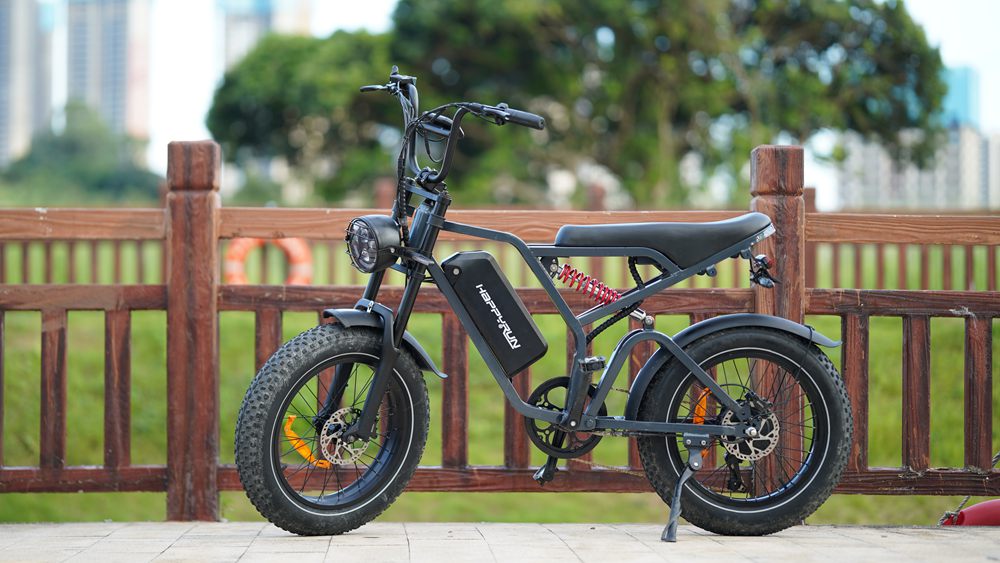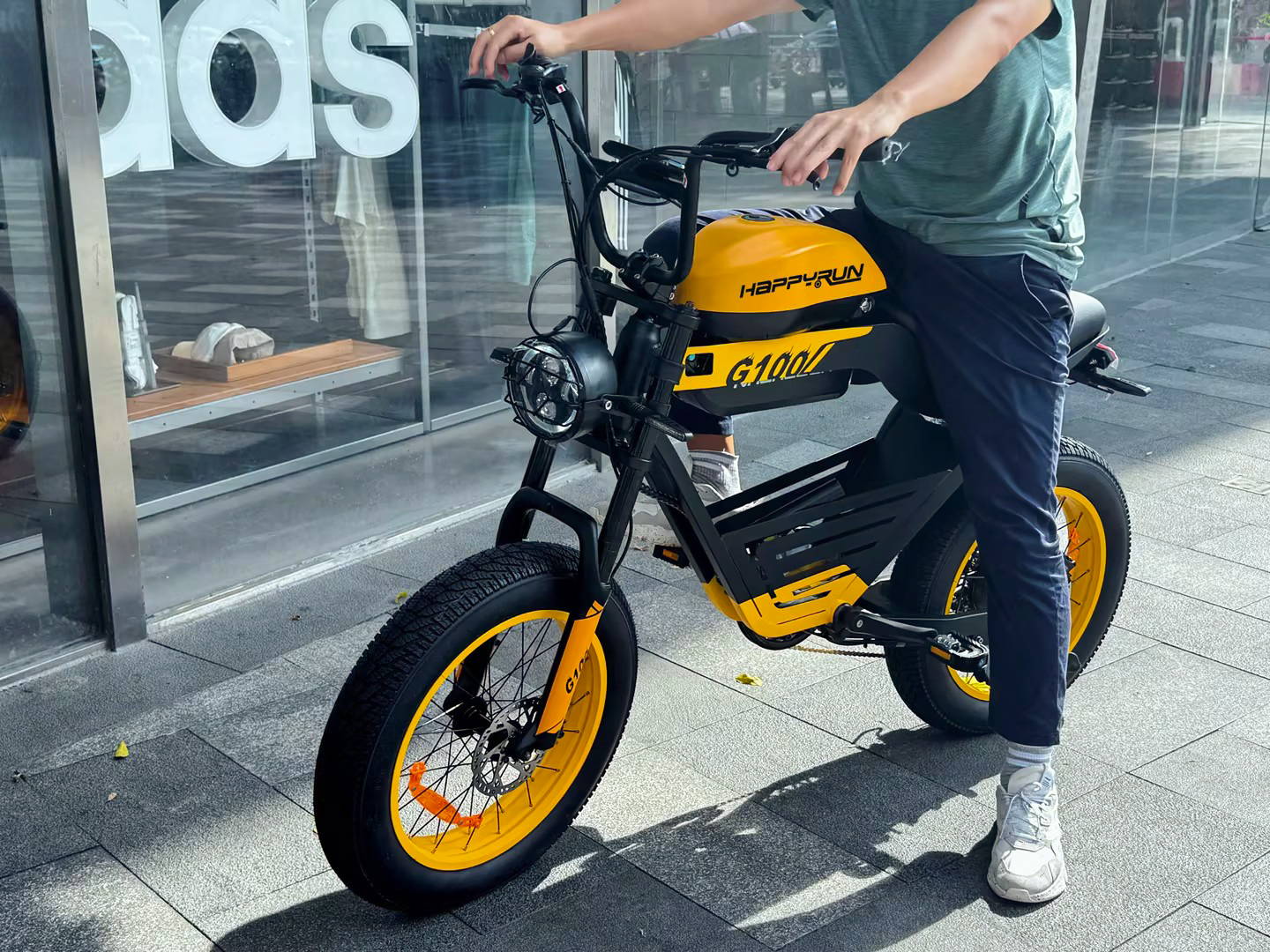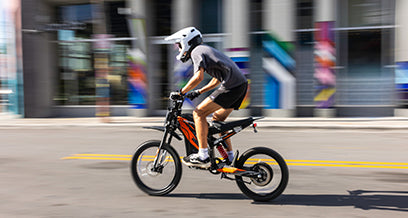
Can Electric Bikes Be Stored Outside?
Storing electric bikes outside can be a practical solution for many riders, but it comes with both benefits and risks. Understanding how to protect your e-bike from the elements is crucial for maintaining its performance and longevity.
Electric bikes, or e-bikes, are a game changer for adults seeking easy and environmentally friendly transportation. However, as electric bikes become more popular and pricy, an important question arises: Can electric bikes be stored outside? While it appears to be a sensible option, there are certain challenges and concerns to take if you want to maintain your e-bike, such as keeping it safe and always in good shape.
What Are the Benefits of Storing Electric Bikes Outside?
Storing electric bikes outside offers convenience and space-saving benefits. It allows for quick access, encouraging more frequent use and promoting an active lifestyle. Additionally, outdoor storage frees up indoor space, which is particularly advantageous for those living in small apartments or homes.
Storing your electric bike outside offers several advantages:
- Convenience: If you ride your e-bike frequently, having it available outside can save you energy and time. There's no need to handle restricted inside places or worry about filth and grime on the floors.Easy access encourages more frequent use, promoting an active lifestyle.
- Space-saving: Ideal for those with limited indoor storage options, freeing up valuable space in your home. If you live in a tiny apartment or house, interior storage space may have limits. Storing the bike outdoors frees up crucial space indoors for other necessities.
- Encourages Usage: When your bike is conveniently accessible, you are more likely to utilize it for quick excursions or errands. Having your bike readily available can lead to more spontaneous rides and errands. This can encourage a more active lifestyle and lessen dependency on cars or public transportation.
However, while these advantages are enticing, there are also significant drawbacks to consider.
What Are the Risks of Storing Electric Bikes Outdoors?
Outdoor storage poses several risks, including exposure to harsh weather conditions like rain, snow, and UV radiation, which can damage components and lead to rust. Additionally, there is a heightened risk of theft and vandalism, as e-bikes are valuable targets even when secured with locks.
- Weather Exposure: E-bikes are susceptible to weather conditions. Rain, snow, and UV rays can damage electrical components, cause corrosion, and fade paint. Prolonged exposure can cause corrosion, fading paint, and potential electrical problems.
- Theft and Vandalism: Even in safe neighborhoods, an e-bike left outdoors might draw unwelcome attention. E-bikes are pricey, and even with locks and alarms, they are not completely secure against theft or vandalism. E-bikes are valuable targets; leaving them outside increases the risk of theft.
- Maintenance Concerns: Outdoor storage frequently complicates upkeep. Dirt and debris can accumulate, requiring more frequent cleaning and upkeep. Debris, dirt, and moisture can collect on the bike, necessitating more regular cleaning and maintenance to keep it running properly.
- Space Limits: Some residential neighborhoods or apartment complexes may have strong laws against keeping bicycles outside, limiting your alternatives or resulting in fines.
How Can You Safely Store Your Electric Bike Outside?
To safely store your electric bike outdoors, use a high-quality bike cover to protect it from the elements. Always remove the battery when possible, as it is the most vulnerable component. Secure the bike with a robust lock in a well-lit area to deter theft.
To ensure safe outdoor storage:
- Invest in a Quality Bike Cover: A waterproof, UV-resistant cover protects against rain and sunlight while preventing dirt accumulation. A decent cover will shield your bike from rain, snow, and UV rays. Look for a cover that is waterproof, UV-resistant, and long-lasting. A properly fitting cover can also help keep dirt and debris off your bike.
- Choose a Safe Location: Keep your bike as secure as possible. A covered porch, carport, or garage side can offer additional shelter from the weather. Additionally, choose a well-lit and prominent location to prevent possible burglars. Opt for shaded or sheltered areas like a covered porch or bike shed to minimize weather exposure.
- Use Strong Locks: When parking your e-bike outside, security is paramount. Invest in a high-caliber lock, like a heavy-duty chain lock or U-lock. For increased security, try utilizing numerous locks or a GPS tracker. Secure your bike with high-quality locks, such as a heavy-duty chain lock or U-lock, to deter theft.
- Routine Maintenance: A bike that is stored outdoors need regular maintenance. Check your tire pressure, oil the chain, and examine the electrical components on a regular basis. Cleaning the bike on a regular basis will help avoid rust and other weather-related issues.
What Are the Best Outdoor Storage Options for Electric Bikes?
The best outdoor storage options for electric bikes include bike sheds, covered bike racks, or portable bike garages. These solutions provide shelter from weather and some protection against theft while allowing for proper ventilation to prevent moisture buildup.
The best outdoor storage solutions include:
- Weather-resistant Bike Sheds: These provide excellent protection against the elements and theft.
- Portable Shelters: Easy to set up and take down, offering flexibility in storage options.
- Secure Bike Racks: While not as protective as sheds, they can be effective when combined with strong locks.
How Does Weather Affect E-Bike Components?
Weather can significantly impact e-bike components. Rain and snow can cause rust on metal parts, while UV rays can degrade plastic components and paint. Extreme temperatures can also affect battery performance and lifespan, making indoor storage preferable when possible.
Weather conditions can significantly impact e-bike components:
- Humidity: High humidity levels can lead to rust and corrosion on metal parts and electrical components.
- Extreme Temperatures: Both hot and cold temperatures can affect battery performance; storing e-bikes in controlled environments is preferable.
What Maintenance Is Required for Outdoor-Stored E-Bikes?
Outdoor-stored e-bikes require regular maintenance due to increased exposure to dirt and moisture. This includes frequent cleaning to remove debris, checking for rust on metal parts, and ensuring that electrical connections are dry and secure to maintain optimal performance.
Regular maintenance is essential for e-bikes stored outdoors:
- Routine Cleaning: Clean your bike frequently to prevent dirt buildup that can cause rust.
- Check Tire Pressure: Ensure tires are properly inflated to maintain safety and performance.
- Inspect Electrical Components: Regularly check connections and battery health to avoid issues during rides.
Are There Alternatives to Outdoor Storage for E-Bikes?
Alternatives to outdoor storage for e-bikes include indoor storage in garages or basements and using communal bike storage facilities. These options provide better protection from weather elements and reduce the risk of theft while ensuring the longevity of your e-bike.
Alternatives include:
- Bike Sheds: A bike shed may provide safe, weather-resistant storage outside of your residence. These shelters are particularly intended to hold bicycles and frequently have built-in locking devices for increased security.
- Balcony Storage: If you reside in an apartment, you should consider keeping your bike on the balcony. This protects it from direct exposure to weather elements while also preserving inside space.
- Shared Indoor Storage: Some apartment complexes and communities provide shared bike storage. These facilities are often more secure than outside storage and provide superior weather protection.
- Wall-mounted Racks: Ideal for limited spaces, these keep bikes off the ground while ensuring safety.
The Importance of Extended Storage
For people who do not ride their e-bike regularly, long-term storage requires extra care.
- Partial Charge: If you want to store the bike for a lengthy period of time, keep the battery charged between 30% and 70%. This helps to avoid over-discharging and increases the battery's life.
- Regular Inspections: Even if you don't use the bike, examine it regularly to guarantee it's in excellent working condition. Look for evidence of corrosion, damage, or additional dangers that might result from being stored outside.
- Remove the Battery: If you plan to leave the bike unused for an extended period of time, think about disconnecting the battery and storing it indoors. This reduces battery damage due to high temperatures and humidity.

Buying Tips
When considering outdoor storage solutions for your electric bike:
- Select Durable Covers: Invest in high-quality covers that are waterproof and UV-resistant.
- Choose Secure Locations: Look for sheltered spots that reduce exposure to harsh weather conditions.
- Utilize Effective Locks: Use robust locks to deter theft; consider GPS trackers for added security.
- Explore Reliable Brands: Brands like HappyRun, known for their commitment to quality over nine years, offer excellent e-bike options tailored to various needs.
E-Bike Expert Views
“Storing an electric bike outside requires careful planning,” advises Dr. Emily Carter, a cycling safety expert. “Using protective measures like quality covers and secure locks can significantly enhance the longevity of your e-bike.”
Conclusion
Storing an electric bike outside is a viable alternative, but it takes careful preparation and the proper safeguards. By investing in preventive measures such as a quality bike cover and safe locks, as well as selecting a protected storage area, you can lessen the hazards associated with outdoor storage. However, if feasible, try using bike shelters or communal indoor storage to secure your electric bike from the weather and theft.
FAQs
How can you safely store your electric bike outside?
To safely store your electric bike outside, use a high-quality, weather-resistant cover to protect it from rain, snow, and UV rays. Additionally, choose a sheltered area that minimizes exposure to the elements and ensures proper ventilation to prevent moisture buildup.
What are the best outdoor storage options for electric bikes?
The best outdoor storage options for electric bikes include weather-resistant bike sheds, portable shelters, or secure bike racks. These options provide protection from the elements and deter theft while ensuring easy access to your bike.
Which protective measures should you take for outdoor storage?
Protective measures for outdoor storage include using a waterproof cover, securing the bike with high-quality locks, and storing it in a shaded or sheltered area. Regular maintenance and cleaning will also help prevent rust and wear.
Are there alternatives to outdoor storage for electric bikes?
Alternatives to outdoor storage include indoor options like garages, basements, or dedicated bike rooms. If space is limited, consider wall-mounted racks or vertical storage solutions to keep your e-bike safe from the elements and theft.
Why is indoor storage generally preferred for electric bikes?
Indoor storage is preferred for electric bikes because it offers protection from weather damage, theft, and temperature fluctuations. A controlled environment helps maintain battery health and overall bike condition, extending its lifespan significantly
































Leave a comment